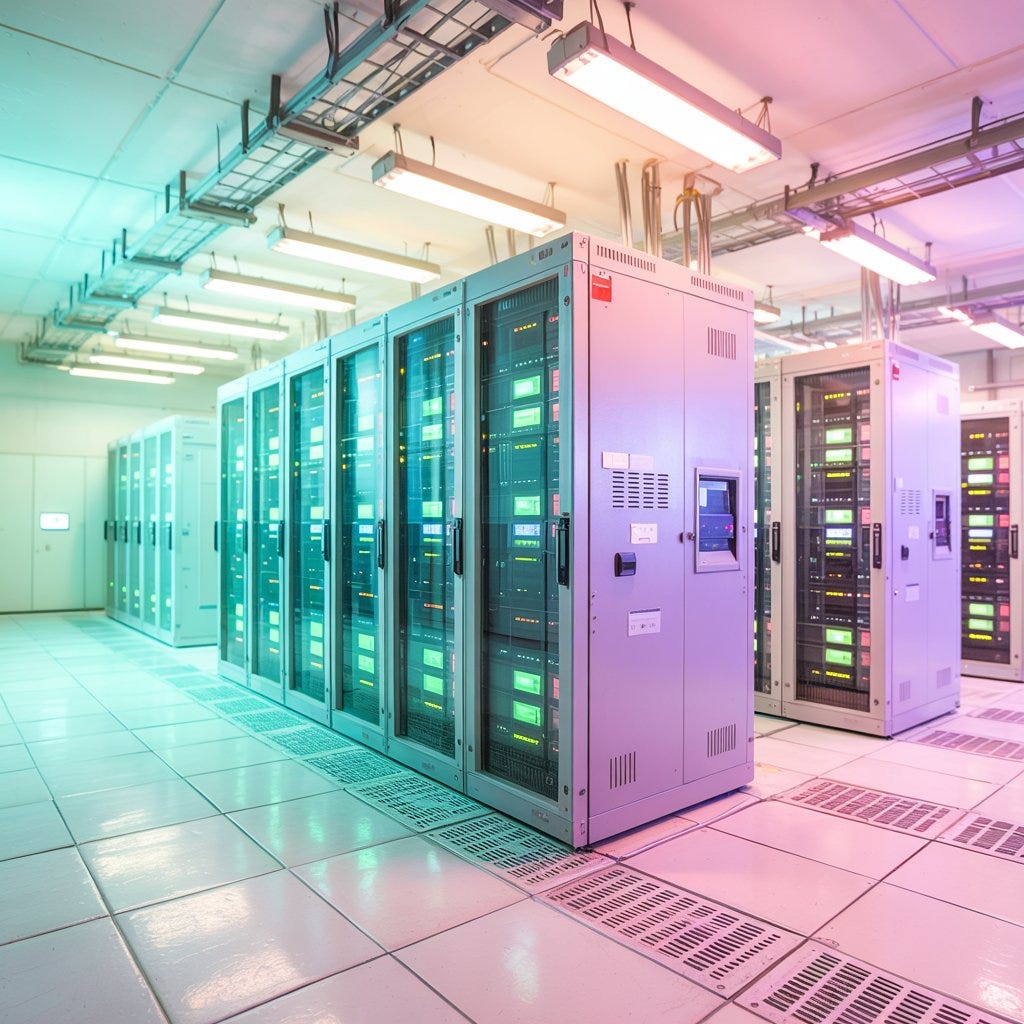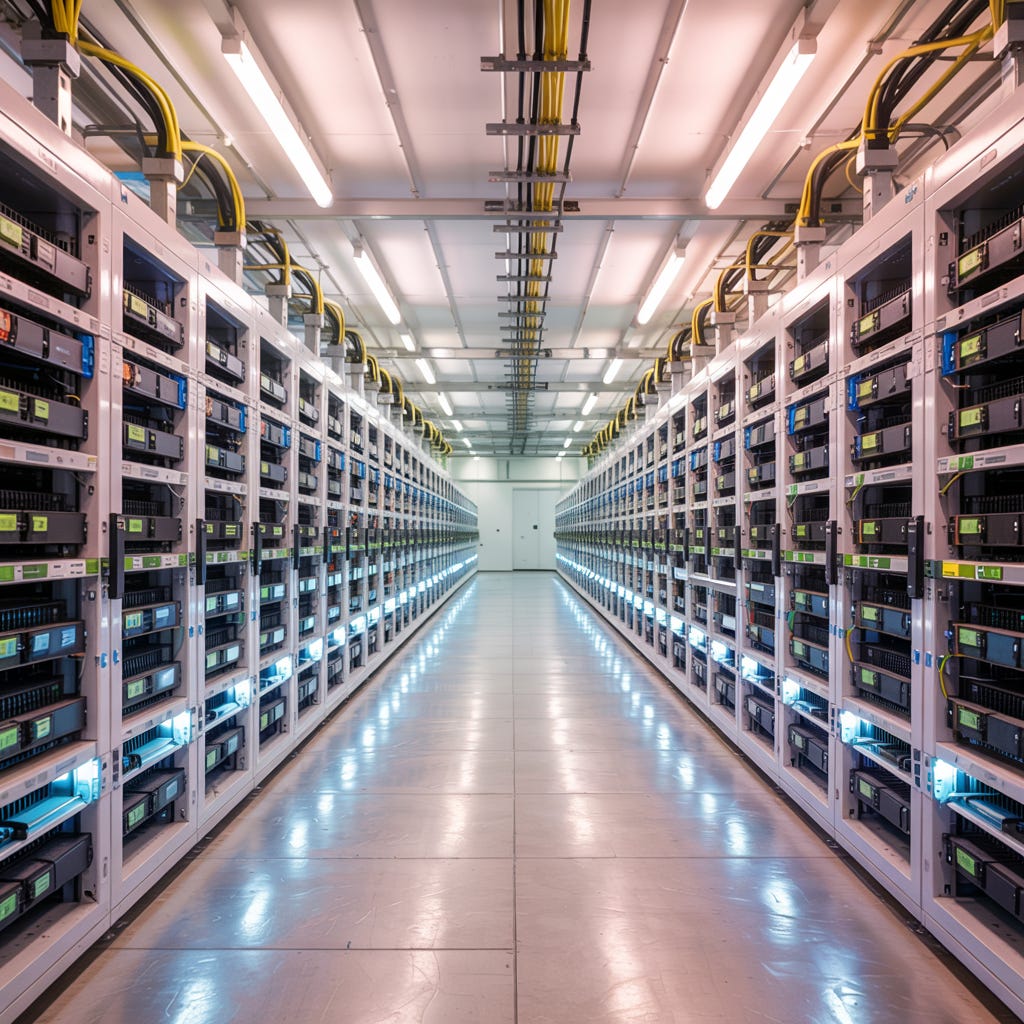Welcome to Global Data Center Hub. Join investors, operators, and innovators reading to stay ahead of the latest trends in the data center sector in developed and emerging markets globally.
The Real Cost of Intelligence
When OpenAI’s Chief Financial Officer told the Wall Street Journal that a one-gigawatt AI data center now costs about $50 billion, she revealed the scale of capital reshaping the digital economy. The figure ($15 billion for land, power, and construction, and $35 billion for GPUs and frontier chips), captures how far the economics of intelligence have shifted from software to infrastructure. It defines the new financial structure of AI: dense, physical, and extraordinarily expensive.
This disclosure matters because it turns abstraction into arithmetic. For years, the AI discussion focused on models and capabilities. Now it has turned to megawatts and megadollars. Compute has become an industrial commodity that behaves more like energy or steel than code.
From Cloud to Concrete
Traditional hyperscale data centers cost $8 - $!2 million dollars per megawatt. A 100 megawatt facility (a large build before the AI wave) runs about $1 billion. The new AI campuses being built by OpenAI and its partners such as Microsoft and CoreWeave exceed $40-$50 million per megawatt. High-density GPUs, liquid cooling, and enormous power upgrades have driven that increase.
OpenAI’s CFO said the company’s compute base grew from roughly 200 megawatts in 2022 to about 2 gigawatts by the end of 2024, with plans to reach 20 gigawatts within two years. That is equivalent to Ireland’s total electricity demand. Each step in model scale and complexity raises the capital required to support it. AI has moved from a software challenge to a construction project measured in gigawatts.
What $50 Billion Buys
The cost structure of a 1-gigawatt AI plant divides cleanly into two halves: the physical world and the silicon world.
The first $15 billion covers familiar territory: land, substations, transmission lines, backup power, switchgear, cooling, and the shell itself. These assets depreciate over decades and fit into traditional project-finance models. A campus of this size demands about a thousand acres, multiple high-voltage substations, and 100,000 tons of cooling capacity. Construction takes up to 4 years, financed through 20- to 25-year debt.
The other $35 billion sits inside the racks. Each Nvidia H100 sells for roughly $25,000 to $30,000, and a single 1-gigawatt cluster can hold 5 - 7 million GPUs before counting networking or integration. These chips depreciate in 3 to 4 years, with resale values that fluctuate wildly between product generations. Lenders can model a data center’s power and building costs. They cannot yet model chips that lose most of their value with each new release.
Financing the Frontier
AI infrastructure behaves like a hybrid of industrial capital and venture investment. Traditional data centers qualify as infrastructure, long-lived and debt-friendly. AI campuses do not. They combine rapid obsolescence, uncertain replacement cycles, and extreme power demands.
To close that gap, OpenAI has begun testing new structures. One example is the AMD warrant arrangement, which links financial upside to hardware performance. It aligns chip suppliers, investors, and operators around shared risk and reward. Such hybrid capital models mark an early attempt to finance compute as an asset class rather than a cost center.
Still, the numbers are staggering. Reaching 20 gigawatts could require over $1 trillion in total investment, an amount larger than the global venture ecosystem and comparable to the combined market capitalization of the largest energy companies. OpenAI’s CFO noted that banks, private equity, and governments will need to participate through guarantees, co-investments, and sovereign partnerships. She described AI as a national strategic asset, a phrase that places it alongside energy and defense in terms of importance.
Compute as Infrastructure
Compute now carries the characteristics of an infrastructure asset. It demands high power density, extreme capital investment, and constant replacement. The financing challenge mirrors the early days of utilities and telecommunications. Investors already treat fiber and power plants as core assets; within a few years, compute clusters may join that list.
OpenAI’s $50 billion blueprint provides the first quantitative foundation for this shift. Each additional watt of capacity translates directly into productivity. Each new data center resembles a power station feeding the intelligence economy.
The Energy Shadow
A 20 gigawatt buildout would make OpenAI one of the 25 largest power consumers in the world. At typical utilization rates, that equals roughly 100 terawatt-hours of electricity per year, similar to the total consumption of the Netherlands.
At that scale, energy procurement becomes strategy, not logistics. AI companies must secure decades-long power purchase agreements or build generation directly. Land near substations, water, and fiber routes has become scarce. Grids across the United States, Europe, and Asia are already showing strain. Every additional gigawatt of compute now collides with national energy planning.
The Constraint That Defines the Era
OpenAI’s CFO described the company as “compute constrained.” The phrase captures the central fact of the AI economy. The company cannot deploy models like Sora 2 immediately after completion because capacity is limited. Even new features, such as the personalized assistant Pulse, are confined to premium users not because of pricing strategy but because there is not enough compute to serve them all.
Innovation no longer moves at the speed of code. It moves at the speed of construction, power development, and chip manufacturing. Growth in every segment of the value chain depends on how quickly capital can build capacity.
When Capital Becomes the Bottleneck
If 1 gigawatt of frontier compute costs $50 billion, the feedback loops into the global economy are immense. Semiconductor manufacturers like TSMC, Samsung, and Intel already spend up to $200 billion a year on new fabs, and meeting AI demand could push those numbers higher. In energy markets, ERCOT projects that data center load in Texas will climb from 85 gigawatts today to over 200 gigawatts by 2031. Capital is being redirected from digital services to physical assets: steel, concrete, silicon, and grid infrastructure.
Financial markets are adjusting. Infrastructure funds, sovereign wealth vehicles, and pension plans are exploring compute capacity as a yield-bearing investment similar to power plants or pipelines. The $50 billion figure is quickly becoming a reference point for valuing the industrial side of AI.
The Return of Industrial Policy
Calling AI a “national strategic asset” reflects a broader trend. In the last century, economic power depended on energy and manufacturing. In this one, it will depend on access to compute. Governments have begun to respond. The U.S. CHIPS Act, the European Union’s digital infrastructure initiatives, and programs in Japan and South Korea all aim to secure domestic capacity. OpenAI’s disclosure quantifies the challenge: each gigawatt of sovereign compute costs fifty billion dollars. Any nation pursuing technological independence must plan at that magnitude.
The New Definition of Scale
Software companies once grew by minimizing physical cost. AI reverses that logic. The leading players (OpenAI, Anthropic, Google, Meta) are now becoming heavy-asset operators that control their silicon supply, energy access, and infrastructure. OpenAI functions more like a utility than a tech startup: it raises capital, manages power procurement, depreciates hardware, and monetizes throughput. Compute has become the resource that defines competitive advantage and shapes the distribution of returns.
At $50 billion per gigawatt, only a handful of organizations can participate. The top tier includes Microsoft, Amazon, Google, Meta, OpenAI, Nvidia, and perhaps Apple. Below them are sovereign funds and national champions such as Saudi Arabia’s PIF, the UAE’s G42, Singapore’s STT, and Japan’s KDDI. Everyone else rents capacity from them. The distinction between those who own compute and those who lease it will set the boundaries of competition for the next decade.
The Financial Lever of Intelligence
The $50 billion figure is not just a data point; it is a valuation model. Each 1 gigawatt campus can generate tens of billions in annual revenue depending on utilization. Even modest margins could rival early semiconductor or energy infrastructure returns. The deciding factor is not innovation but financial reach. The organizations capable of raising and structuring capital at this scale will determine how fast the AI economy evolves.
OpenAI’s disclosure establishes a new baseline for understanding AI economics. $50 billion per gigawatt is the real cost of frontier compute. Two-thirds of that capital sits in chips. Compute scarcity defines the pace of innovation. Finance, not code, determines expansion. These are not forecasts; they describe the infrastructure of intelligence as it exists today.


